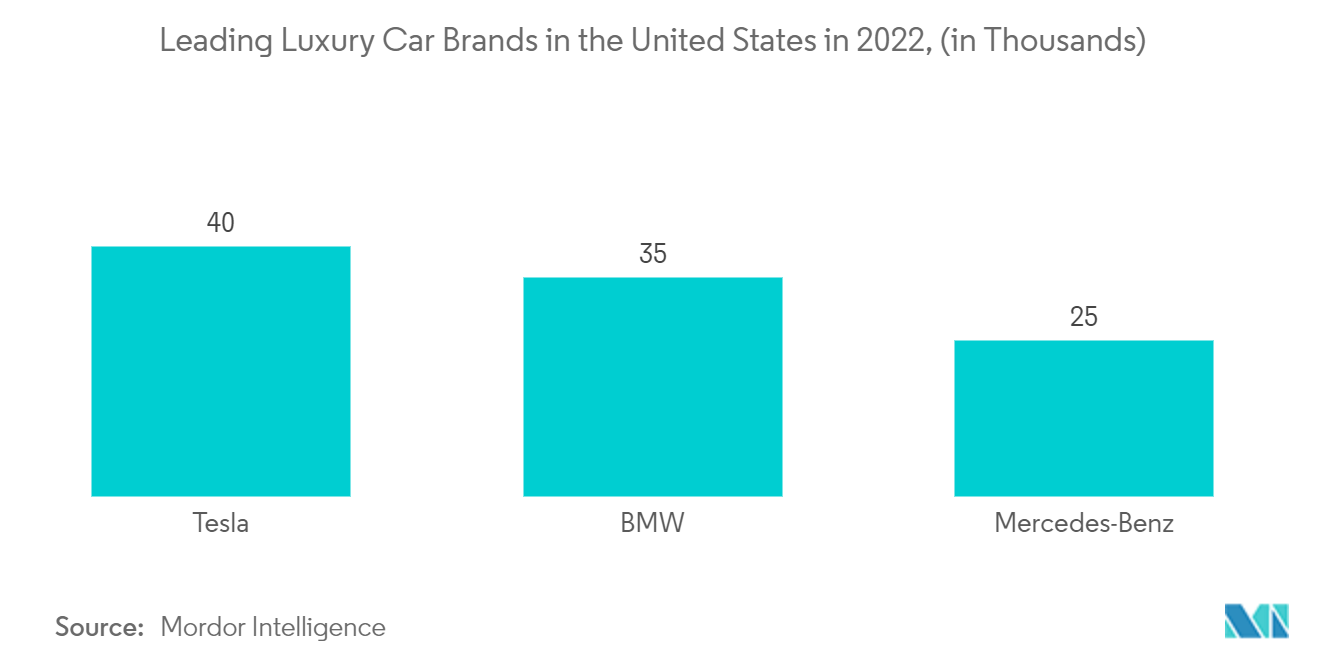Market Trends of North America Automotive Upholstery Industry
Increasing Demand for Aftermarket Upholstery Modifications May Drive the Market
Aftermarket upholstery modification allows to personalize and customize the interior of vehicles according to preferences. Aftermarket upholstery offers a wide range of materials, colors, and patterns not typically available in OEM options. It also allows for repairs or upgrades to worn-out or damaged seats, enhancing comfort and aesthetics.
Furthermore, customers may choose aftermarket upholstery to improve durability, add special features like heating or cooling elements, or incorporate unique designs that reflect their personality. Overall, aftermarket upholstery modifications provide a way to enhance the interior of vehicles and create a more pleasing experience. Quality, aesthetics, comfort, customization options, and ease of maintenance are the key attributes that are the focus of customers when considering aftermarket upholstery modifications.
High-quality materials and craftsmanship, visually appealing designs, comfortable seating experiences, customization choices, easy maintenance, and a balance between cost and overall value are the factors that are likely to fuel the demand for aftermarket upholstery modifications. The most preferred material for aftermarket upholstery modifications varies depending on individual preferences. However, leather is often favored for its luxurious appearance, durability, and value. It exudes a high-end feel and is associated with luxury vehicles. Additionally, leather is known for its ease of cleaning and maintenance.
Fabric is often chosen for its comfort, affordability, and versatility. Ultimately, the choice of material in aftermarket upholstery modifications is a subjective decision based on factors such as personal style, budget, and desired level of sophistication.
The demand for aftermarket upholstery modifications is expected to persist in the coming decade due to the ongoing desire for vehicle customization, advancements in materials and technology, and the ability to enhance the longevity and value of vehicles through personalized interior upgrades.

United States Holds the Largest Market Share
The vehicle's interior may not be a deal-breaker or winning feature for the customer.; however, they are the customer's first and last contact with the car. The primary function for passengers while purchasing Automotive Upholstery for a car, truck, or SUV, after the cost and quality of the material, is the contrasting surfaces and textures used to bring in a decorative effect and functionality. As a result, automotive makers are considering new materials for upholstery with enhanced environmental performance.
For those interested in adding a luxury element to their cars, leather has remained in demand amongst the wealthy. Moreover, it is known for giving a premium look and feel. As a result, leather upholstery offers certain utilitarian benefits over ordinary materials used in car interiors. This is forcing automakers and OEMs to provide leather upholstery in their mid-range and premium car offerings, thereby driving the development of the leather segment of the automotive industry.
Every year, the American automobile sector requires more than 229,300 tons of automotive textiles, including 9,700 tons of headliners (ceilings), 38,500 tons of carpets, 50,070 tons of woven tire cord, and 20,000 tons of seatbelt fabric. The international market for American-made automobile upholstery and textiles is expanding.
There is also a growing demand for luxury cars. Consumers today are willing to shell out extra cash for luxurious upholstery in vehicles. In the United States, luxury variants of pickup vans and MUVs are offered with leather upholstery as an optional fit. With the trend of owning luxurious vehicles in the United States, opportunities for automotive upholstery are also on the rise. In 2022, Tesla was the leading luxury car brand in the United States, recording sales of nearly 484,400 units. It edged out its main competitor, BMW, which recorded estimated sales of over 327,900 vehicles; this shall be reflected in the Automotive Upholstery Market as well.


